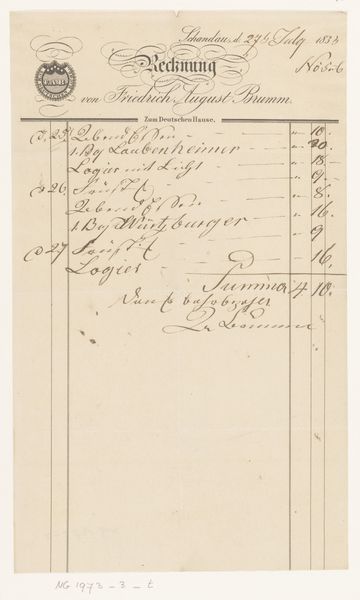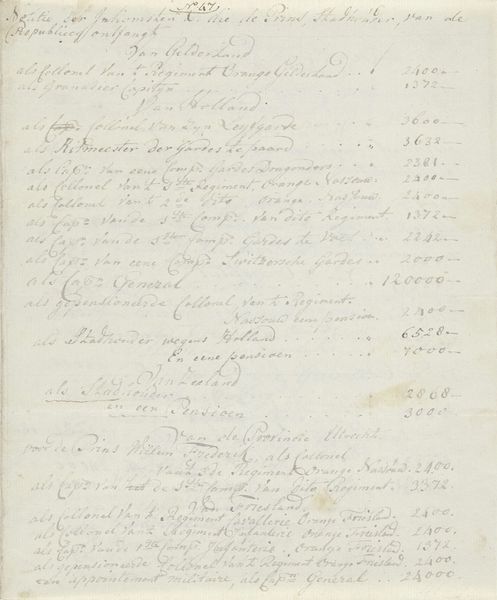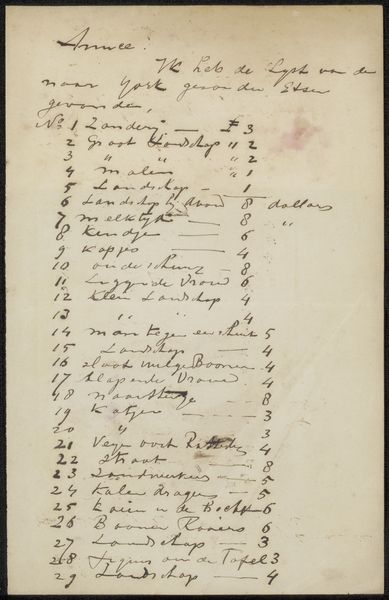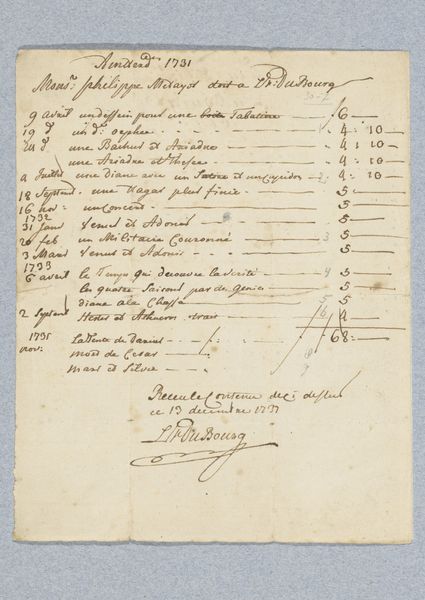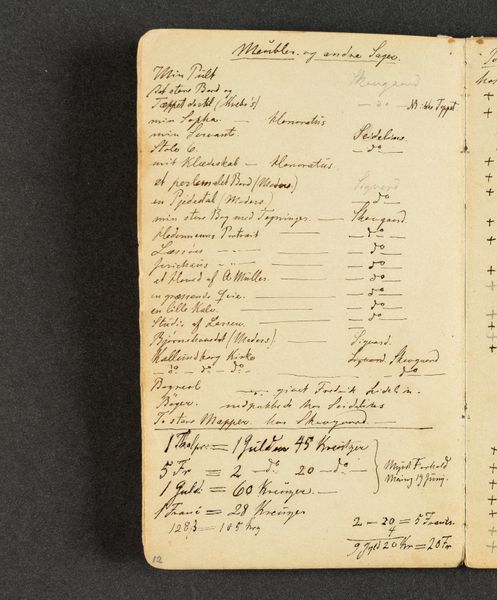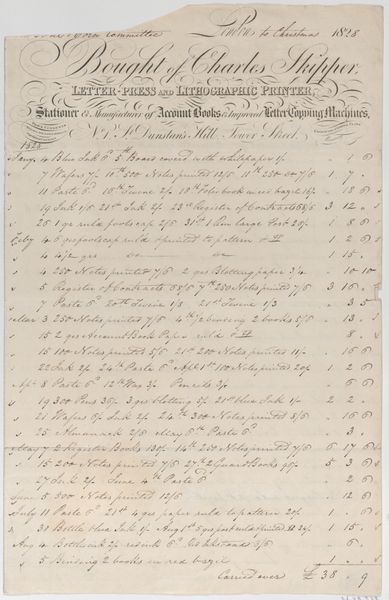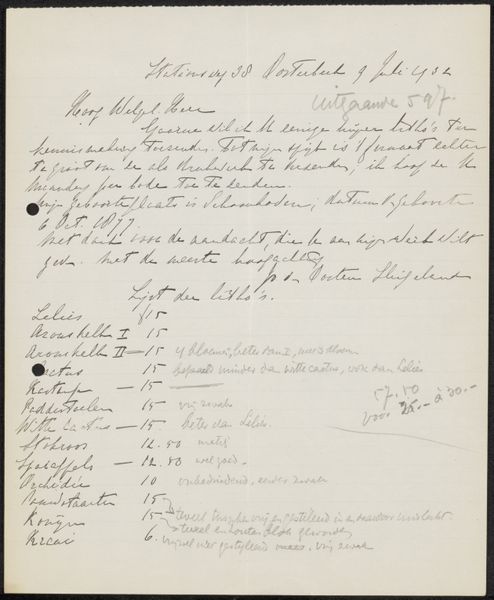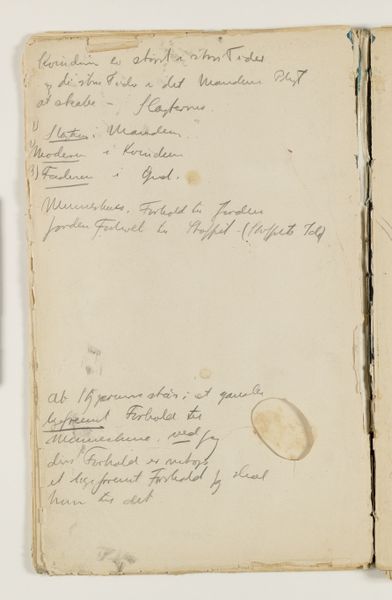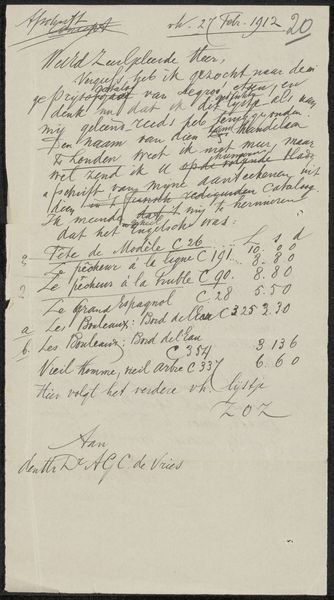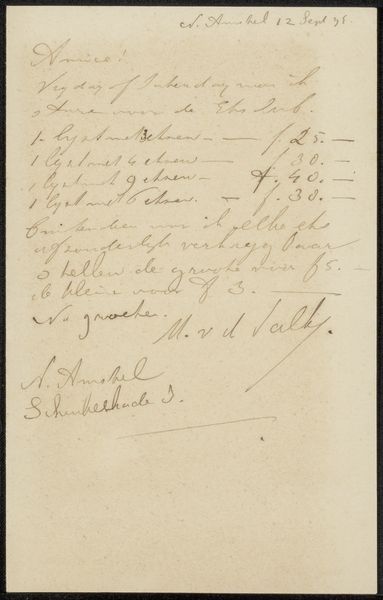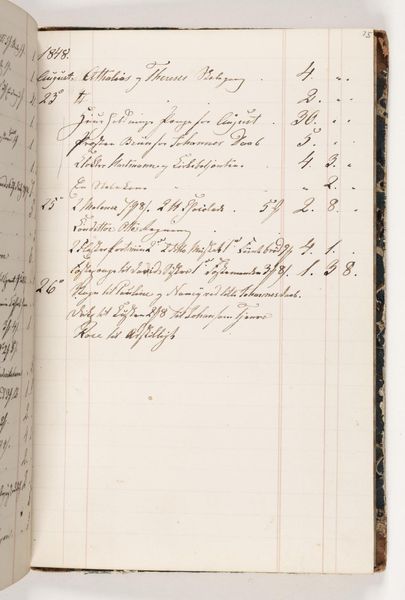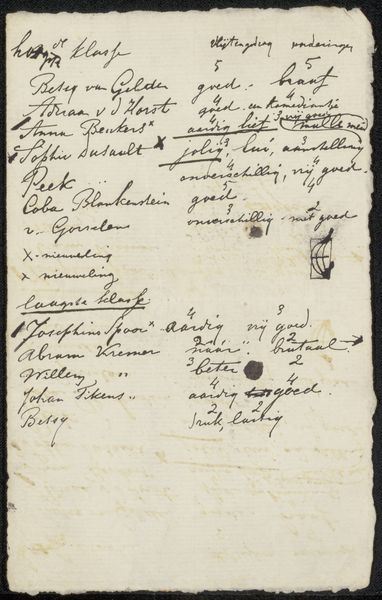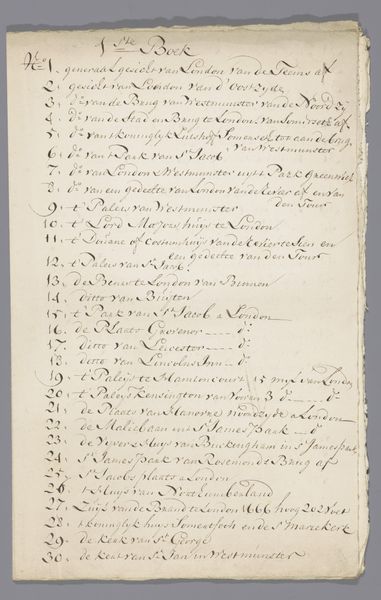
drawing, paper, ink
#
drawing
#
paper
#
ink
#
monochrome
Dimensions: height 32.7 cm, width 21.2 cm
Copyright: Rijks Museum: Open Domain
Curator: Here we have "Reisdocument," an ink drawing on paper, likely created between 1833 and 1838 by an anonymous artist. It's currently held in the collection of the Rijksmuseum. Editor: My initial impression is one of faded bureaucracy. The monochrome palette and dense text evoke a sense of archival significance, yet the fragility of the medium suggests a certain ephemerality. Curator: Precisely. Note the linear structure and the careful arrangement of the text. Each line constitutes a distinct entry, revealing a clear intention for organization and perhaps standardization of information. Editor: The visual symbol of the list itself carries weight. Lists, across cultures, signify control, record-keeping, and attempts to impose order on chaos. This document suggests the journey was carefully planned or at least meticulously documented after the fact. Curator: Absolutely. Look closely at the calligraphic style. The varying pressure of the ink creates a subtle rhythm across the page. The penmanship, though consistent, hints at the individuality of the hand that wrote it. It represents structure imbued with agency. Editor: Yet, it is also very personal! I notice several place names – Altenburg, Weimar, Gotha. They represent milestones or perhaps moments of respite within that controlled journey, hinting at a desire for movement, exploration. Curator: Yes, the script reveals something else. Notice how the column of numbers on the right, ostensibly monetary values, anchors the entries in a material reality. Editor: Which perhaps tells an even greater story! Maybe about commerce, trade, the expense of travel. Every mark symbolizes human action, even within seemingly sterile administration. Curator: Indeed. This work presents a fascinating dialectic, wouldn’t you agree? An anonymous record becomes a singular expressive work. Editor: Absolutely. A seemingly simple list reveals a complex web of associations. It also prompts me to wonder, how this was used, viewed, or treated after it served its first purpose. I think our listeners now have the same thoughts.
Comments
No comments
Be the first to comment and join the conversation on the ultimate creative platform.
